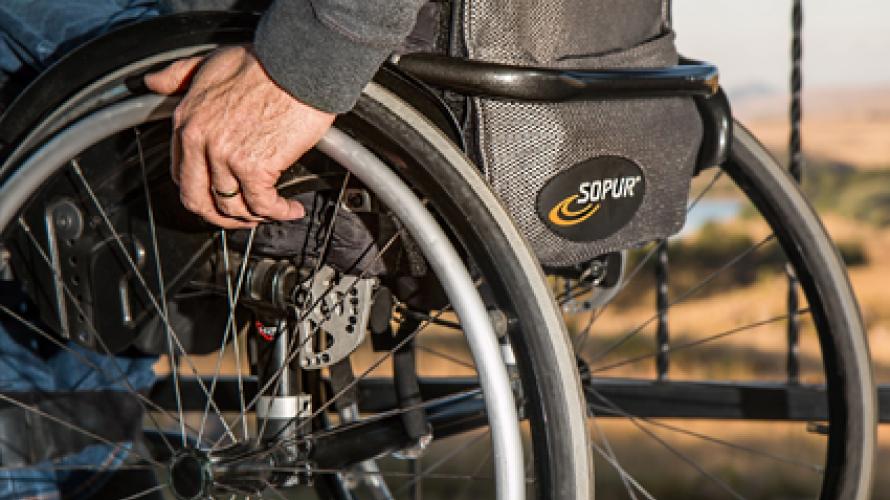
Introduction
Wheelchair breakdowns can injure wheelchair users and limit mobility and social participation. Poor wheelchair maintenance increases the risk of wheelchair breakdowns and personal injury or death, and increases the costs of medical care. The number of users injured from wheelchair breakdowns doubled from 1991 to 2016.
According to a 2016 study, up to 18% of wheelchair users experience a wheelchair-related injury each year. Furthermore, 44–57% reported at least one wheelchair breakdown in the past 6 months. Of these, 20–30% of users stated that because of the breakdown, they missed work and appointments, were stranded at home or away from home, or were injured.
Importance of maintaining a wheelchair
If you use a wheelchair (or know somebody who does), then you should develop the skills and knowledge to perform basic wheelchair maintenance. Wheelchair maintenance can reduce wheelchair breakdowns and related consequences, as well as costs for repairs and replacement.
If you are able to, you should regularly inspect all of the components on the wheelchair to make sure they work right. If you need assistance, consider asking a caregiver, friend, or family member for help with checking your wheelchair. If there is a problem, you should either fix it or take the wheelchair to a maintenance expert.
When to perform maintenance and what to look for
You’ll need tools to perform basic maintenance on your wheelchair. Helpful tools might include screwdrivers, Allen wrenches, combination wrenches, lubricant, a tire lever, a tire pump, a tire patch kit, a bucket with water, and a cloth. When transferring out of the wheelchair to do maintenance, always sit on a stable and protected surface.
The following sections provide details about maintaining manual and power wheelchairs. The sections identify when to inspect specific parts and functions and what signs of problems to look for.
Do not try to fix or replace any wheelchair part if you don’t feel comfortable doing it. Make plans to have the wheelchair serviced completely by a wheelchair maintenance expert once a year. A wheelchair maintenance expert may include your wheelchair vendor or manufacturer, an occupational or physical therapist, or another employee at a wheelchair seating clinic.
Manual wheelchairs: Areas for maintenance
Inspect every part of the wheelchair. Make sure that all nuts and bolts are tight, but not too tight.
- Rear wheels
- Caster wheels
- Cushion
- Supports
- Frame
Power wheelchairs: Areas for maintenance
Before doing any maintenance, turn the power switch to OFF and remove the charger cords. Inspect every part of the wheelchair. Make sure that the nuts and bolts are tight, but not too tight.
- Rear wheels
- Caster wheels
- Cushion
- Supports
- Frame
- Electrical system
References
Hansen, R., Tresse, S., & Gunnarsson, R. (2004). Fewer accidents and better maintenance with active wheelchair check-ups: A randomized controlled clinical trial. Clinical Rehabilitation, 18(6), 631–639.
Kirby, R., & MacLeod, D. (2001, June 22–26). Wheelchair-related injuries reported to the National Electronic Injury Surveillance System: An update. In: Proceedings of the RESNA 2001 annual conference (pp. 385–387). Arlington, VA: Rehabilitation Engineering and Assistive Technology Society of North America.
McClure, L. A., Boninger, M. L., Oyster, M. L., Williams, S., Houlihan, B., Lieberman, J. A., & Cooper, R. A. (2009). Wheelchair repairs, breakdown, and adverse consequences for people with traumatic spinal cord injury. Archives of Physical Medicine and Rehabilitation, 90(12), 2034–2038.
Toro, M. L., Worobey, L., Boninger, M. L., Cooper, R. A., & Pearlman, J. (2014, June 11–15). Type and frequency of reported wheelchair repairs and adverse consequences among people with spinal cord injury. Presentation at the Rehabilitation Engineering and Assistive Technology Society of North America Conference , Indianapolis, IN.
Worobey, L., Oyster, M., Nemunaitis, G., Cooper, R., & Boninger, M. L. (2012). Increases in wheelchair breakdowns, repairs, and adverse consequences for people with traumatic spinal cord injury. American Journal of Physical Medicine and Rehabilitation , 91(6), 463–469.
Xiang, H., Chany, A., & Smith, G. (2006). Wheelchair related injuries treated in U.S. emergency departments. Injury Prevention, 12(1), 8–11.
Also in the SCI Model Systems Consumer Information Series on Wheelchairs:
- Getting the Right Wheelchair: What the SCI Consumer Needs to Know
- The Power Wheelchair: What the SCI Consumer Needs to Know
- The Manual Wheelchair: What the SCI Consumer Needs to Know
Authorship
Maintenance Guide for Users of Manual and Power Wheelchairs was developed by Sara Munera Orozco, MS, Jon Pearlman, PhD, Lynn Worobey, PhD, Michael Boninger, MD, in collaboration with the Model Systems Knowledge Translation Center.
Source: The content is based on research and/or professional consensus. This content has been reviewed and approved by experts from the SCI Model Systems (SCIIMS), funded by the National Institute of Disability, Independent Living, and Rehabilitation Research.
Disclaimer: Do not try to fix or replace any wheelchair component if you don’t feel comfortable doing it. Contact a wheelchair maintenance expert once a year to perform a complete wheelchair maintenance.
The content of this factsheet does not replace the advice of a medical professional. You should consult a health care provider about specific medical concerns or treatment. The content of this factsheet was developed under a grant from the National Institute on Disability, Independent Living, and Rehabilitation Research (NIDILRR grant number 90DP0012). NIDILRR is a Center within the Administration for Community Living (ACL), Department of Health and Human Services (HHS). The content of this factsheet does not necessarily represent the policy of NIDILRR, ACL, HHS, and you should not assume endorsement by the Federal Government.
Copyright © 2018 Model Systems Knowledge Translation Center (MSKTC). You can freely reproduce and distribute this content. Include proper attribution. But you must get permission before using this content in fee-based products.